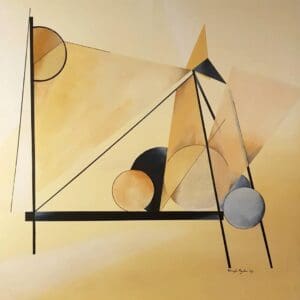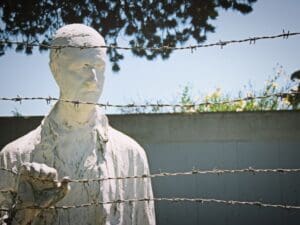The Greeks of Greece have a dramatic historical trend in sculpture production. These progressive efforts can be well traced in the three stylistic periods of their artistic development as categorized by art historians. These periods are the Archaic period, the Classical period and the Hellenistic period. The chief material for sculpture production was marble because of its abundance in ancient Greece. However, other materials such as ivory, bronze and gold were sparingly used. Their statues played significant roles in the lives of the people. For instance, statues were placed at vantage points in the country in remembrance of important events and the victors at the Olympic Games. Others were placed over graves to remember the departed souls and for decorating public buildings.
Archaic Period
The Archaic period is the first period in ancient Greek Art history that began in 700BC and ended in 480BC. The term ‘archaic’ is a Greek term which means ‘early’. It is used to describe the many developments in art which occurred in the early stages of Greek culture. Thus, the sculpture productions in this period indicate the initial skills that the Greek sculptors exhibited. This stage in their sculpture production is the motionless stage, where the pieces produced lacked motion or flexibility. Their statues were characterized by symmetry and stiffness of form. Important features of the human figure were emphasized. The male sculpted figures which were known as ‘Kouros’ (youth) were in nudity or naked because the Greeks athletes performed naked in public during the Olympic Games. They also had their left foot placed in a forward position. On the other hand, the female sculpted figures called ‘Kore'(maiden) were fully clothed. The postures for their sculptural figures included standing, kneeling and sitting. They produced three-dimensional forms (sculpture-in-the-round) and relief carvings. They sculpted figures mainly of gods and goddesses in the likeness of men, women, and children.
Owing to the lack of skill development, their sculpture pieces were not realistically depicted. In their quest to spice their sculptures with smiles, the Greek sculptors deliberately curved and drawn in the lips into an expression referred to by art historians as ‘archaic smile’. It was an artificially expressed form of a smile on the face of the sculptures as a result of lack of dexterity in the production.
Classical Period
This is the second period in Greek art history. It spans between 480BC and 323BC. The term ‘classical’ means ‘high excellence’ or ‘first class’. The works produced in this period are marked by a high degree of creativity and skills. Greek art reached its greatest peak in this period. There was a noticeable switch from the motionless representations to vibrant, motion empowered figures. Sculpture in this period was marked by flexibility and a whole-hearted exploration of the representation of movement. Critical observation and the study of human anatomy resulted in the production of sculptural figures in total realism and in their correct proportions. ‘The discus thrower’ (Diskobolos) and ‘The Kritios boy’ produced with marble by the two famous ancient Greek sculptors, Myron and Kritios respectively, are examples. Even today, the detailed and true to nature representations in sculpture is studied by elementary sculptors who are battling with the challenge of producing flexible and realistic statues.
Hellenistic Period
This is the third and last period of ancient Greek art history which started in 323BC and ended in 27BC. The Hellenistic period also referred to as ‘the age of Alexander’ is noted for the high degree of artistic expression with great mastery. The term ‘Hellenistic’ refers to the arts done under Greek influence over the countries in the Mediterranean during the reign of Alexander the Great. Within the cultural centres of the Hellenistic world, several academies arose which engaged in serious analysis of a wide range of fields including arts, literature and medicine. Canons were developed to judge the quality in sculpture. This led to a heightened interest in systems of proportions in sculpture. Works were characterized by realism, extreme emotions, extravagant gestures, musculature and dramatic presentations of forms. Sculptors explored three dimensional movements. One of the earliest developments in sculpture in this period was a high interest in portraiture. Individual likeness was absent in both the archaic and classical sculpture but was however dominant in the Hellenistic sculpture. Several portraits of Alexander the great was sculpted by Lysippos, a famous Greek sculptor. Other sculpted portrait heads include that of Delos, a famous trader in Greece.
An overview of the sculpture productions in the three cardinal periods of Greek art history shows a constant improvement in style and technique of production, from the motionless to motion. It indicates the creative and hard working spirit of exploration and determination on the part of the Greek sculptors to advance in their sculpture profession which they are reckoned today as such. It is a perfect model for young, upcoming sculptors and experienced sculptors who want to define their own paths in the profession to pick lessons from the steady, unrelenting and never give up vision of the ancient Greek sculptors.





